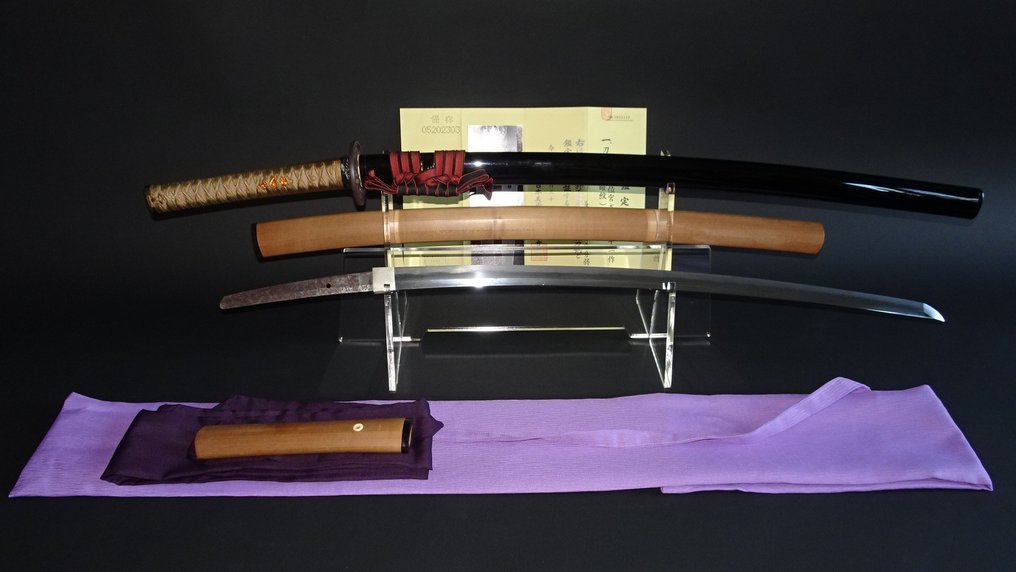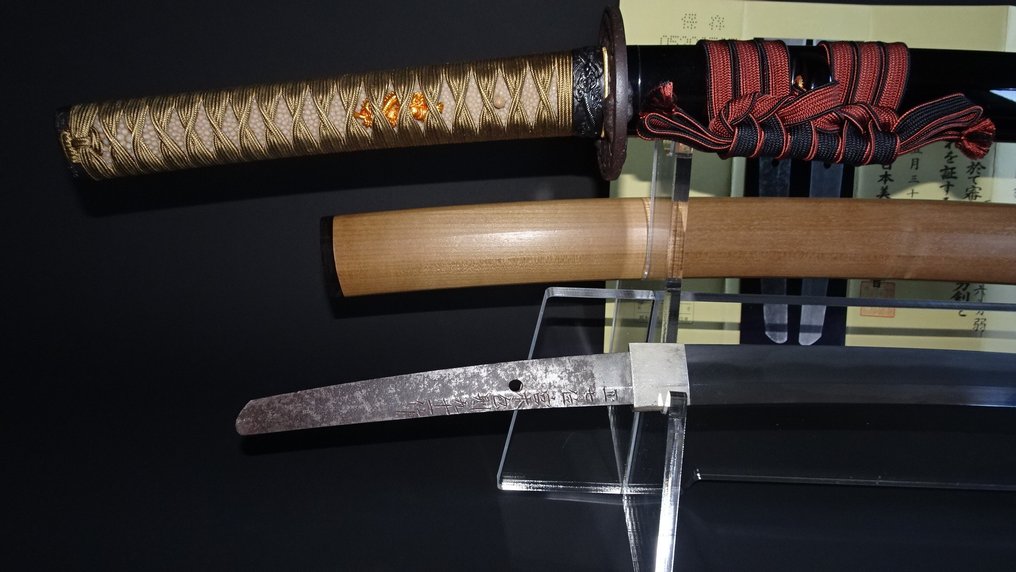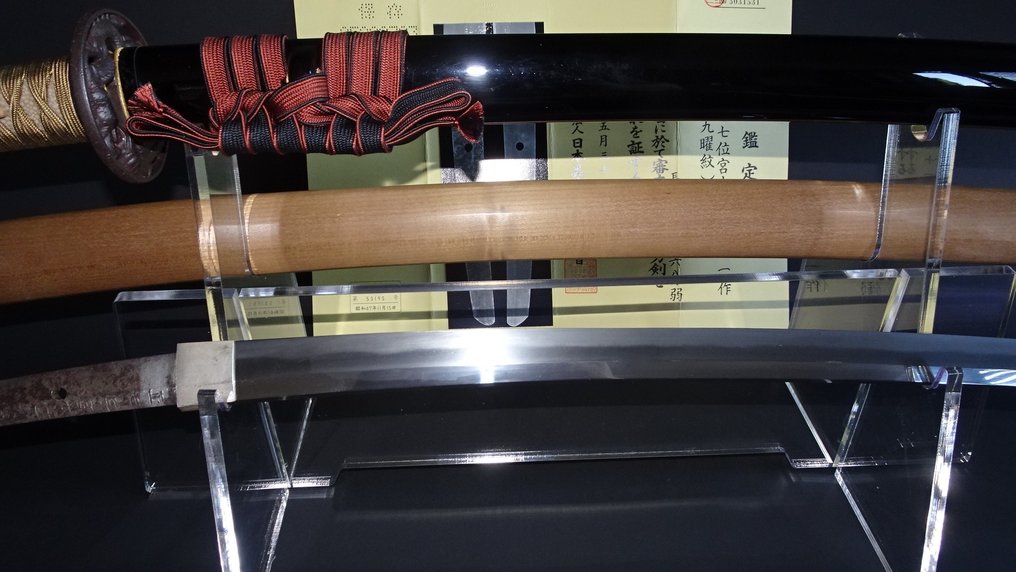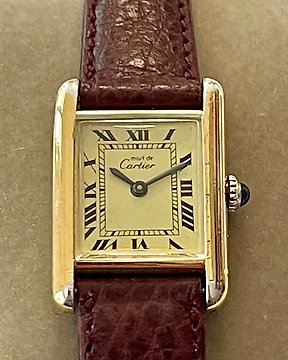The Box is broken, the stand is broken
Voir la traductionNot very decent to keep and say everything is ok and give me this feedback. Like you say product is great shipment box has dammage I hope you are happy with the statue.
Catawiki met continuellement à jour ses moyens techniques. La version de navigateur que vous utilisez actuellement est obsolète. Pour avoir la meilleure navigation possible, veuillez mettre à jour votre navigateur.
Vous pouvez définir vos préférences en matière de cookies en utilisant les boutons ci-dessous. Vous pouvez mettre à jour vos préférences, retirer votre consentement à tout moment, et voir une description détaillée des types de cookies que nos partenaires et nous-mêmes utilisons dans notre Politique en matière de cookies .
Nº 88438207





National Treasure Minamoto Kanenori Kuyo Crest Katana NBTHK Hozon
Kanenori was born in Hoki province (Today’s Tottori prefecture) in the first year of the Tenpo era (1830: The end of the Edo period). He was the second son of a Sake brewery father. His birth name was Miyamoato Shigahiko. He decided to become a swordsmith because of Hoki Yasutsuna, a famous swordsmith living in the same province during the late Heian period (Late 12th century). From childhood, he often visited swordsmiths residing in his neighborhood and loved learning Japanese sword forging.
When he was 22 years old (1851), he went to Osafune village in Bizen province (Today’s Okayama prefecture). And he became an apprentice for Yokoyama Sukekane (横山祐包), a renowned swordsmith in that area. He spent seven years mastering Bizen sword-forging tradition called BIZEN DEN from Sukekane. And after finishing his apprenticeship, he received 包(Kane) letter from his master. And he started to name himself Miyamoto Kanenori.
In 1857, he returned to Hoki province and served Arao Naonari, who was in the high-rank position in the region. Kanenori exclusively forged blades for this lord for a few years. In 1863, Kanenori moved to Kyoto and established a sword-forging site there. He created many blades for Samurai who originally belonged to Choshu domain (Yamaguchi prefecture), living in Kyoto to overthrow the Tokugawa government back then.
Kanenori was eventually recognized by Arisugawanomiya Taruhiro Shinou (有栖川宮 熾仁親王), a royal family. And he received Noto no Kami, an honorable official title, in the third year of the Keio era (1867). After participating in the Boshin war, Kanenori forged a blade for the emperor Meiji to commemorate his enthronement. Kanenori also created blades for the emperor Taisho and Showa. He was also ordered to forge special ceremonial swords for Fushimi Inari shrine, Yasukuni shrine, and Ise shrine. These facts indicate that he was one of the most renowned swordsmiths in the post Samurai era.
In the post-Samurai period, he played an essential role in the Japanese sword. In 1906(the 39th year of Meiji), he received Teishitsu Gigeiin(帝室技芸員: Nationally-designated Important intangible cultural property) Now (Living National Treasure) . The government recognized his contribution to preserving the tradition of Japanese sword forging.
Gassan Sadakazu and Miyamoto kanenori became Teisitu Gigeiin (The Imperial Household craft one)
1915 He made a sword for Emperor Taisyo.
He passed away 1926(Taisyo 15th) age 97.
Blade is in good condition with great hammon and very special the Kuyo crest
Comes in wonderful Koshirae with high quality Dragon mounting and shirasaya.
Blade length 68.4cm
Sori 2.0cm
Width at the hamachi 3cm
Motoshige Kasane 7.5mm
Kissaki 1.85cm
Saki kasane 4.5mm
Mekugi 1
Kuyo crest
Period Taisho era(AD1921 when kanenori was 91 years old)
Country of origin Tokyo
NBTHK Hozon
This authentication paper was only given to authentic Japanese swords, especially well preserved and high quality with artistic value.
National Treasure Minamoto Kanenori Kuyo Crest Katana NBTHK Hozon
Kanenori was born in Hoki province (Today’s Tottori prefecture) in the first year of the Tenpo era (1830: The end of the Edo period). He was the second son of a Sake brewery father. His birth name was Miyamoato Shigahiko. He decided to become a swordsmith because of Hoki Yasutsuna, a famous swordsmith living in the same province during the late Heian period (Late 12th century). From childhood, he often visited swordsmiths residing in his neighborhood and loved learning Japanese sword forging.
When he was 22 years old (1851), he went to Osafune village in Bizen province (Today’s Okayama prefecture). And he became an apprentice for Yokoyama Sukekane (横山祐包), a renowned swordsmith in that area. He spent seven years mastering Bizen sword-forging tradition called BIZEN DEN from Sukekane. And after finishing his apprenticeship, he received 包(Kane) letter from his master. And he started to name himself Miyamoto Kanenori.
In 1857, he returned to Hoki province and served Arao Naonari, who was in the high-rank position in the region. Kanenori exclusively forged blades for this lord for a few years. In 1863, Kanenori moved to Kyoto and established a sword-forging site there. He created many blades for Samurai who originally belonged to Choshu domain (Yamaguchi prefecture), living in Kyoto to overthrow the Tokugawa government back then.
Kanenori was eventually recognized by Arisugawanomiya Taruhiro Shinou (有栖川宮 熾仁親王), a royal family. And he received Noto no Kami, an honorable official title, in the third year of the Keio era (1867). After participating in the Boshin war, Kanenori forged a blade for the emperor Meiji to commemorate his enthronement. Kanenori also created blades for the emperor Taisho and Showa. He was also ordered to forge special ceremonial swords for Fushimi Inari shrine, Yasukuni shrine, and Ise shrine. These facts indicate that he was one of the most renowned swordsmiths in the post Samurai era.
In the post-Samurai period, he played an essential role in the Japanese sword. In 1906(the 39th year of Meiji), he received Teishitsu Gigeiin(帝室技芸員: Nationally-designated Important intangible cultural property) Now (Living National Treasure) . The government recognized his contribution to preserving the tradition of Japanese sword forging.
Gassan Sadakazu and Miyamoto kanenori became Teisitu Gigeiin (The Imperial Household craft one)
1915 He made a sword for Emperor Taisyo.
He passed away 1926(Taisyo 15th) age 97.
Blade is in good condition with great hammon and very special the Kuyo crest
Comes in wonderful Koshirae with high quality Dragon mounting and shirasaya.
Blade length 68.4cm
Sori 2.0cm
Width at the hamachi 3cm
Motoshige Kasane 7.5mm
Kissaki 1.85cm
Saki kasane 4.5mm
Mekugi 1
Kuyo crest
Period Taisho era(AD1921 when kanenori was 91 years old)
Country of origin Tokyo
NBTHK Hozon
This authentication paper was only given to authentic Japanese swords, especially well preserved and high quality with artistic value.
The Box is broken, the stand is broken
Voir la traductionNot very decent to keep and say everything is ok and give me this feedback. Like you say product is great shipment box has dammage I hope you are happy with the statue.
Koshirae is chipped, this was not mentioned in the description or shown in any pictures. I would not have bought it had i seen the chip in the koshirae.
Voir la traductionThe Box is broken, the stand is broken
Voir la traductionNot very decent to keep and say everything is ok and give me this feedback. Like you say product is great shipment box has dammage I hope you are happy with the statue.
Clause de non-responsabilité : usage décoratif et arts martiaux uniquement Cet objet est mis en vente dans le but exclusif de servir de décoration ou d’être utilisé dans la pratique des arts martiaux. En participant à cette vente, vous vous engagez à : Respecter toutes les lois, réglementations et politiques en vigueur. Veiller à ce que l’utilisation de cet objet soit conforme à ces finalités déclarées. Veuillez noter que cet article n’a pas été soumis à une inspection de sécurité ou de fonctionnalité par Catawiki. Catawiki ne tolère aucune activité illégale et décline toute responsabilité en cas de dommages ou de blessures pouvant survenir en raison de l’emploi ou de l’usage inapproprié de cet objet.
Clause de non-responsabilité : usage décoratif et arts martiaux uniquement Cet objet est mis en vente dans le but exclusif de servir de décoration ou d’être utilisé dans la pratique des arts martiaux. En participant à cette vente, vous vous engagez à : Respecter toutes les lois, réglementations et politiques en vigueur. Veiller à ce que l’utilisation de cet objet soit conforme à ces finalités déclarées. Veuillez noter que cet article n’a pas été soumis à une inspection de sécurité ou de fonctionnalité par Catawiki. Catawiki ne tolère aucune activité illégale et décline toute responsabilité en cas de dommages ou de blessures pouvant survenir en raison de l’emploi ou de l’usage inapproprié de cet objet.









